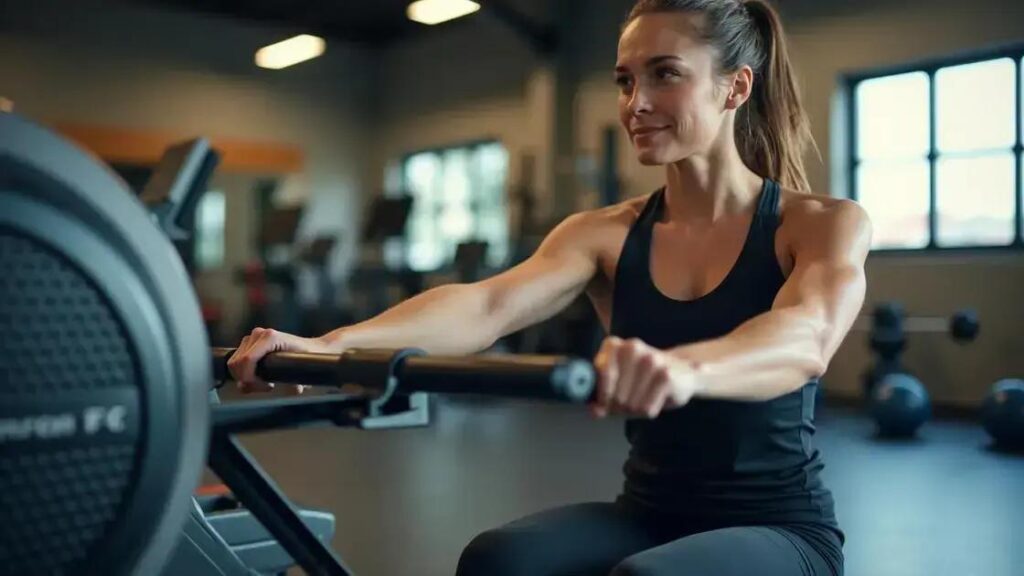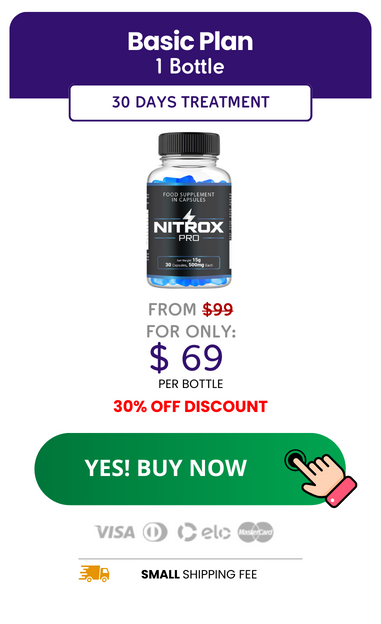Using a rowing machine for full-body fitness provides numerous benefits, including improved cardiovascular health, increased strength, and effective calorie burning. To maximize results, focus on proper rowing technique, create a structured routine, and consistently track your progress.
If you’re looking for a way to enhance your fitness routine, using a rowing machine for full-body fitness might be the perfect solution. Rowing machines are not only effective tools that engage multiple muscle groups, but they also offer an efficient cardio workout. In this article, we’ll uncover the secrets of mastering the rowing machine, explore its benefits, and guide you in creating a balanced workout routine that targets your entire body.
Understanding the Rowing Machine
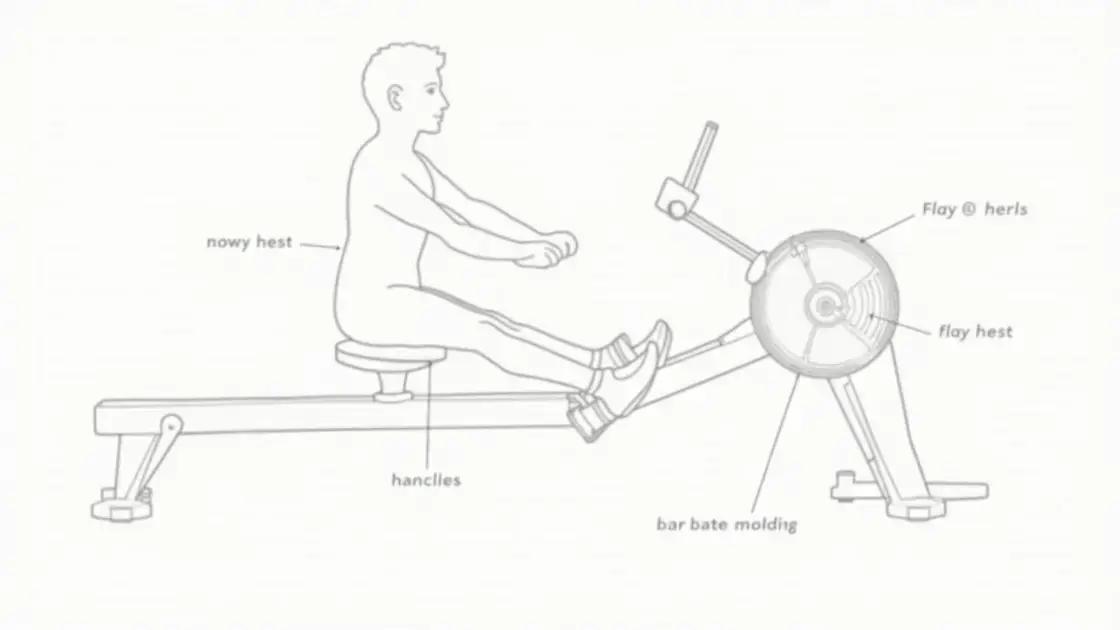
Understanding the rowing machine is the first step in achieving full-body fitness. This versatile machine mimics the motion of rowing a boat on water, utilizing both your upper and lower body effectively. It is composed of a seat, handles, a flywheel, and a footrest. The design allows for a smooth, low-impact workout that can improve endurance and strength.
Components of the Rowing Machine
The main parts of a rowing machine include:
- Seat: This is where you sit and slide back and forth as you row.
- Handle: You pull this towards you to simulate rowing.
- Footrests: Your feet are secured here to provide stability.
- Flywheel: It creates resistance and mimics the feeling of rowing on water.
How the Rowing Machine Works
Rowing machines operate by using a flywheel that moves with your stroke. As you pull the handle, the flywheel spins, providing resistance against your efforts. The tougher the workout, the more resistance you can set. This allows you to train at your own pace, making it suitable for beginners and advanced athletes alike.
Benefits of Using a Rowing Machine
A rowing machine offers an array of benefits:
- Full-body workout: Engaging all major muscle groups including legs, core, and arms.
- Low-impact: Suitable for people with joint issues, as it puts less stress on the joints.
- Calorie burning: An effective way to burn calories and lose weight.
- Cardiovascular fitness: Improves heart health and increases stamina.
By familiarizing yourself with the rowing machine, you set a strong foundation for your workouts. Knowing how the machine works will help you tailor your fitness routine to achieve the best results.
Benefits of Full-Body Workouts
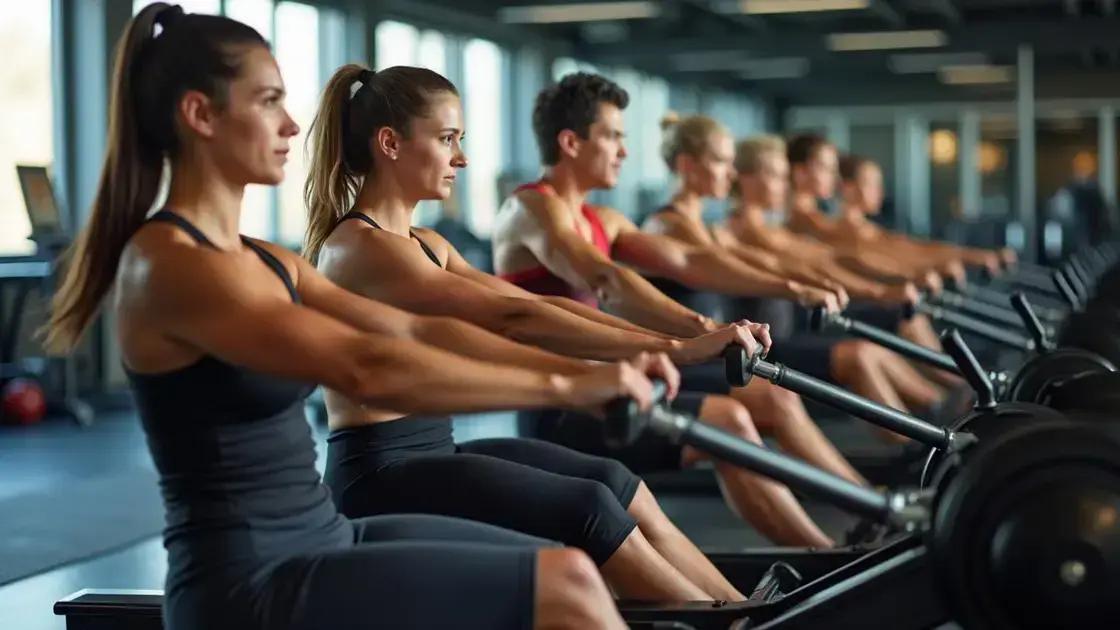
Full-body workouts are an effective way to improve overall health and fitness. Here are some key benefits of incorporating full-body workouts into your routine:
Time Efficiency
One of the main advantages of full-body workouts is that they allow you to target multiple muscle groups in a single session. This means you can complete your workout in less time while still achieving great results.
Improved Strength and Endurance
By working all major muscle groups, you can boost your strength and endurance. This balanced approach will help prevent muscular imbalances and promote functional fitness. Regular training can lead to better performance in daily activities.
Increased Calorie Burn
Full-body workouts typically engage more muscles, which can increase your overall calorie burn. This is beneficial for weight loss and can help maintain a healthy body weight.
Enhanced Cardiovascular Health
Many full-body workouts combine strength training with aerobic exercises. This can lead to improved cardiovascular health, as your heart rate increases and more oxygen is circulated throughout your body, ultimately supporting heart function.
Adaptability and Variety
Full-body workouts are highly adaptable. You can customize your routine based on your goals, whether it’s weight loss, increased strength, or muscle toning. Plus, incorporating different exercises keeps your workouts fresh and exciting.
Integrating full-body workouts with a rowing machine can amplify these benefits, as you’ll engage various muscle groups while enhancing your cardiovascular fitness.
Proper Rowing Technique
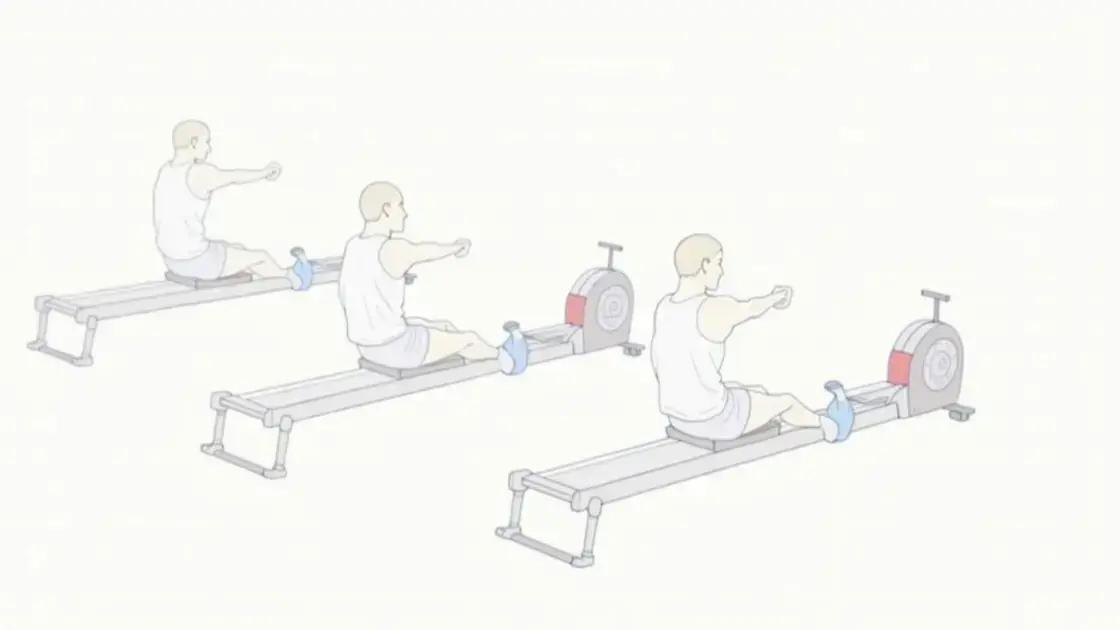
Using the correct rowing technique is vital for maximizing effectiveness and preventing injury while using a rowing machine. Follow these key steps to ensure proper form:
Starting Position
Begin by sitting on the seat with your back straight. Place your feet in the footrests and secure them with the straps. Grip the handle with both hands, keeping your arms straight and your knees bent. Your shins should be vertical, and you should be leaning slightly forward.
Phase One: The Catch
This is the starting phase. Your body should be prepared to move as one unit. Keep your arms straight and your core engaged. This position allows for a strong, efficient start on each stroke.
Phase Two: The Drive
Push off with your legs while pulling the handle toward your chest. Your legs should drive the movement, while your arms and back follow. Focus on using your legs first, then your back, and finally your arms. Maintain a smooth, controlled motion.
Phase Three: The Finish
As you complete the stroke, lean back slightly while keeping the handle close to your body. Your elbows should be tucked, and your hands should finish near your chest. This promotes proper muscle engagement and maximizes effort.
Phase Four: The Recovery
To return to the starting position, extend your arms while leaning forward. Let your body move in a fluid motion. Straighten your legs and work your way back to the catch position. Remember to maintain control throughout this phase.
Repeating this cycle efficiently will enhance your workout and help you achieve your fitness goals faster. Always listen to your body and make adjustments to your form as needed.
Creating a Rowing Routine
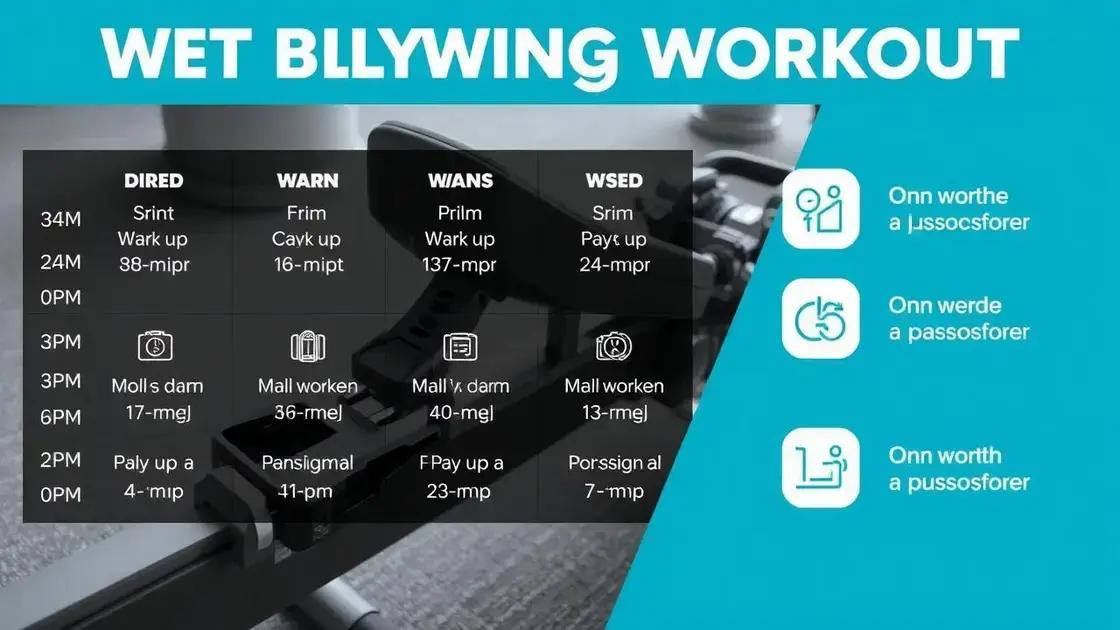
Creating a rowing routine can help you stay committed to your fitness goals while maximizing the benefits of your workouts. Here are some steps to develop an effective rowing routine:
Set Clear Goals
Define what you want to achieve with your rowing routine. Are you aiming to lose weight, build strength, or improve endurance? Your goals will help shape your routine.
Frequency and Duration
Determine how often you can commit to rowing each week. Aim for at least 3 to 4 sessions a week. Each session should last between 20 to 40 minutes depending on your fitness level and goals.
Structure Your Workouts
A well-structured workout can include:
- Warm-up: Spend 5-10 minutes warming up with light rowing and stretching to prepare your muscles.
- Main Workout: Focus on intervals or steady-state rowing. For example, row hard for 1 minute followed by 2 minutes of easy rowing.
- Cool Down: End your session with 5-10 minutes of easy rowing and stretching to help with recovery.
Track Your Progress
Keep track of your workouts, including distance, time, and intensity. This data will help monitor your progress and make adjustments as needed.
Stay Engaged and Motivated
To keep things exciting, vary your workouts. Try rowing at different intensities, using different techniques, or mixing in some bodyweight exercises in between rowing intervals. Listening to music or finding a workout buddy can also keep you motivated.
By following these steps and adapting your routine to fit your needs, you’ll create a rowing plan that supports your fitness journey and keeps it enjoyable.
Embrace Rowing for Full-Body Fitness
Using a rowing machine is an excellent way to achieve full-body fitness through an effective and engaging workout. By understanding the rowing machine and mastering your technique, you lay the groundwork for a successful routine.
Creating a structured rowing program tailored to your goals will help you stay motivated and track your progress. Remember to include warm-ups, main workouts with varied intensities, and cool-downs in your sessions. Full-body workouts with a rowing machine not only improve strength and endurance but also enhance overall cardiovascular health.
With commitment and a well-planned approach, rowing can become a cornerstone of your fitness journey, leading to significant health benefits and a more active lifestyle.
FAQ – Frequently Asked Questions about Using a Rowing Machine
What are the benefits of using a rowing machine?
Rowing machines provide a full-body workout, improve cardiovascular health, and allow for low-impact exercise, making them great for all fitness levels.
How should I start using a rowing machine?
Begin with a warm-up, focus on proper technique, and gradually increase your intensity as you become more comfortable with the movements.
How often should I use a rowing machine?
For best results, aim to use the rowing machine at least 3 to 4 times a week, with sessions lasting between 20 to 40 minutes.
What is the proper rowing technique?
Proper rowing involves four phases: the catch, the drive, the finish, and the recovery. Ensure you engage your legs first, then back, followed by arms.
How can I create an effective rowing routine?
Set clear fitness goals, determine workout frequency and duration, structure your workouts with warm-ups and cool-downs, and track your progress regularly.
Can rowing help with weight loss?
Yes, rowing is an effective calorie-burning exercise that can aid in weight loss when combined with a balanced diet and regular workouts.

